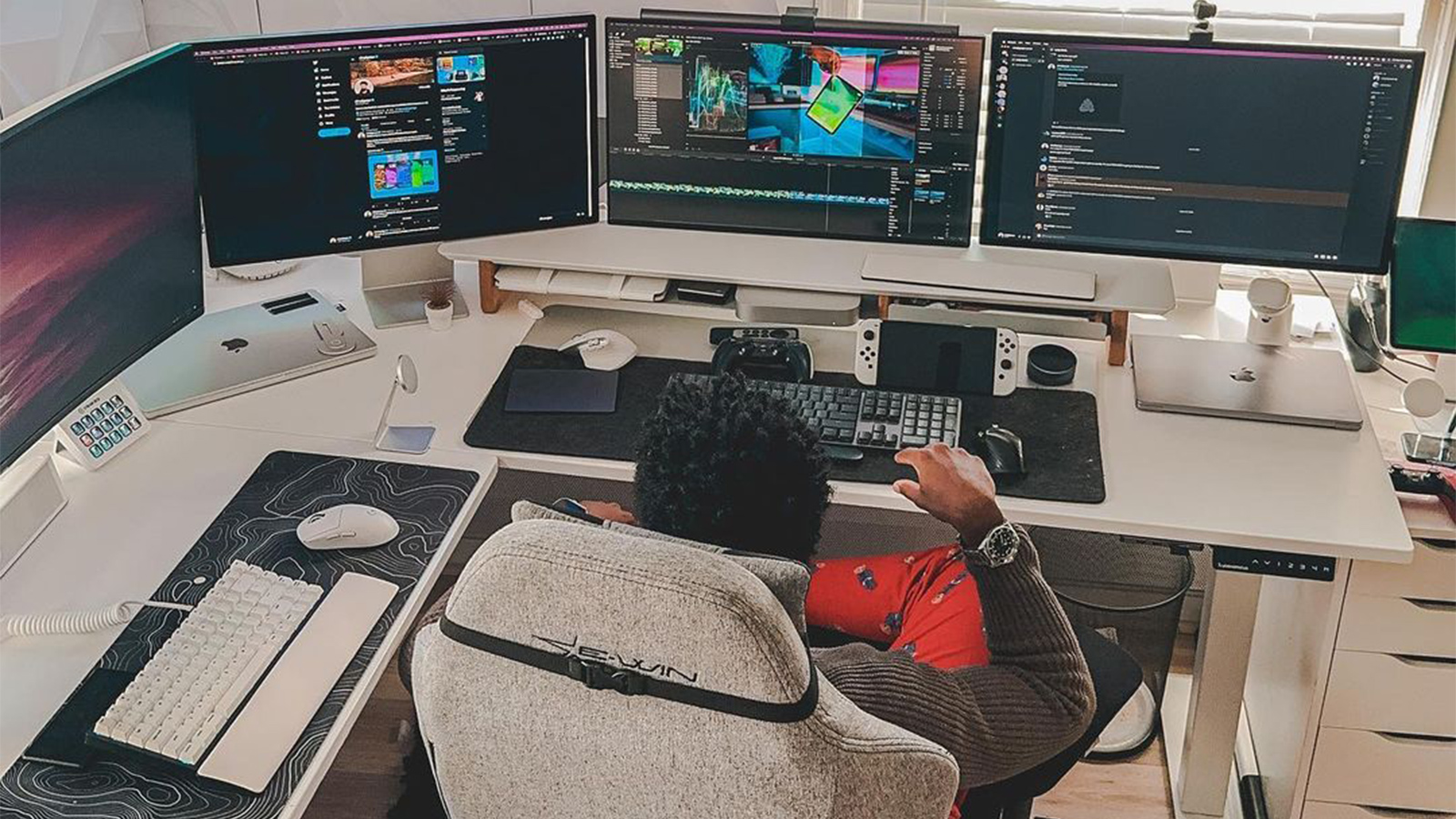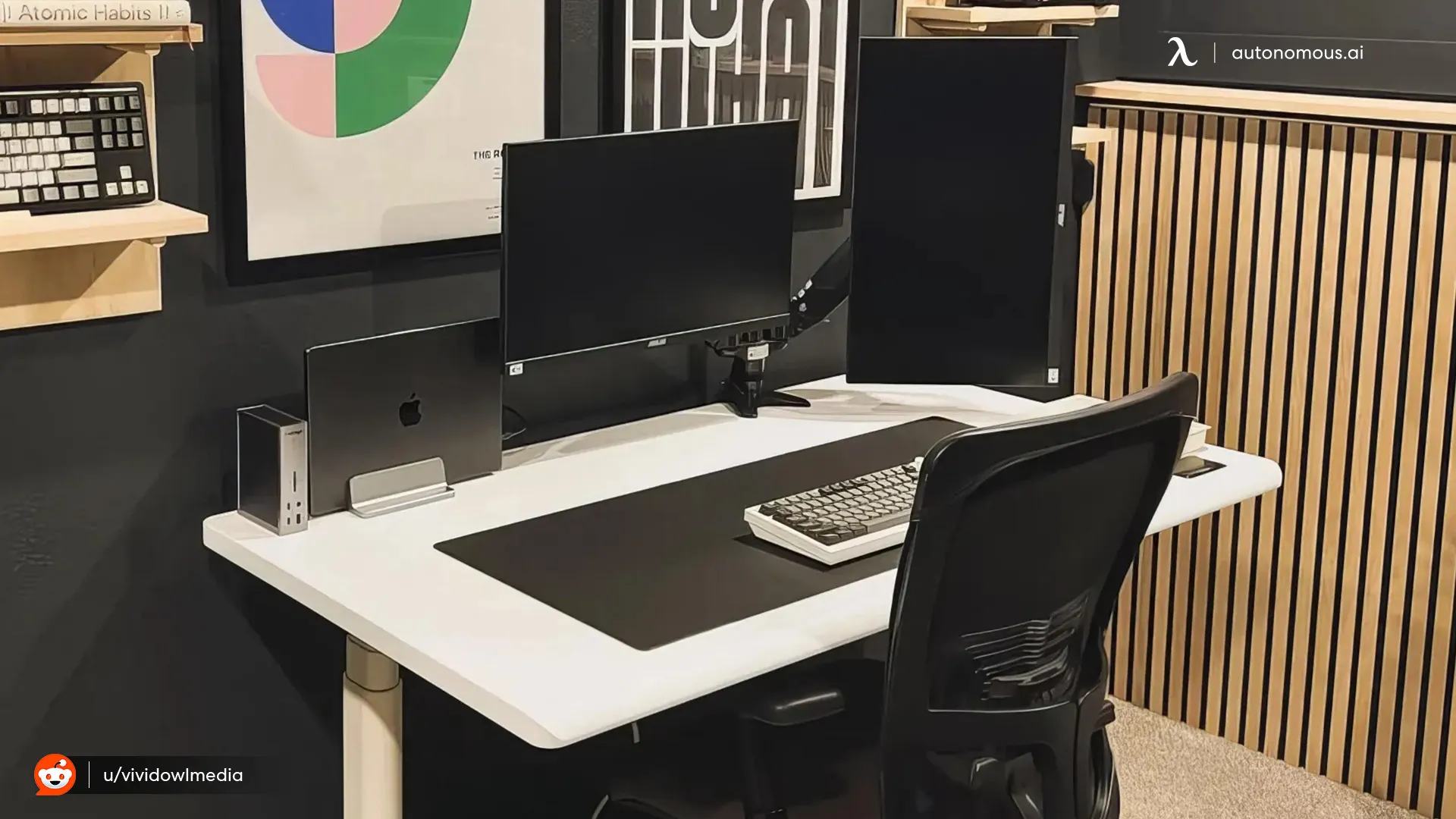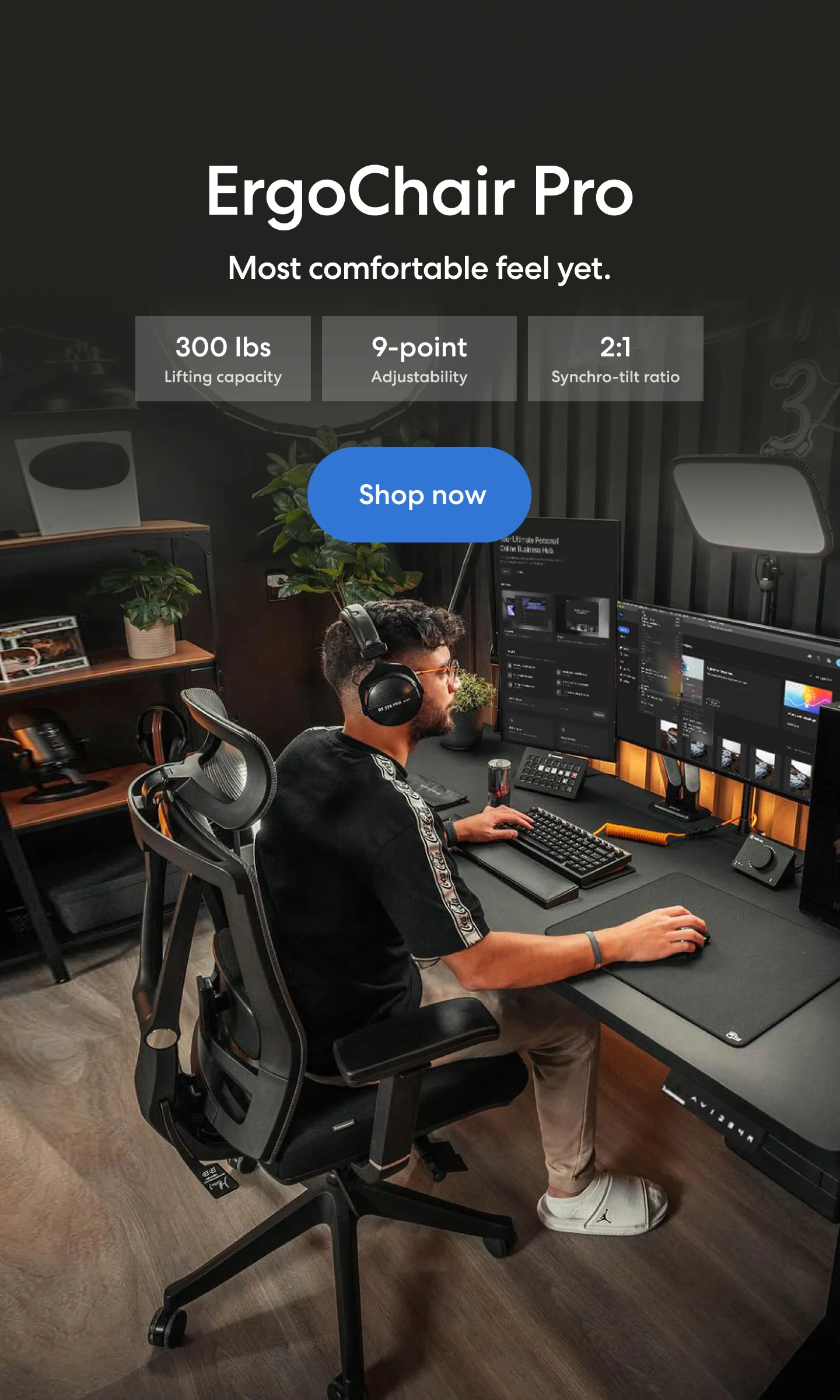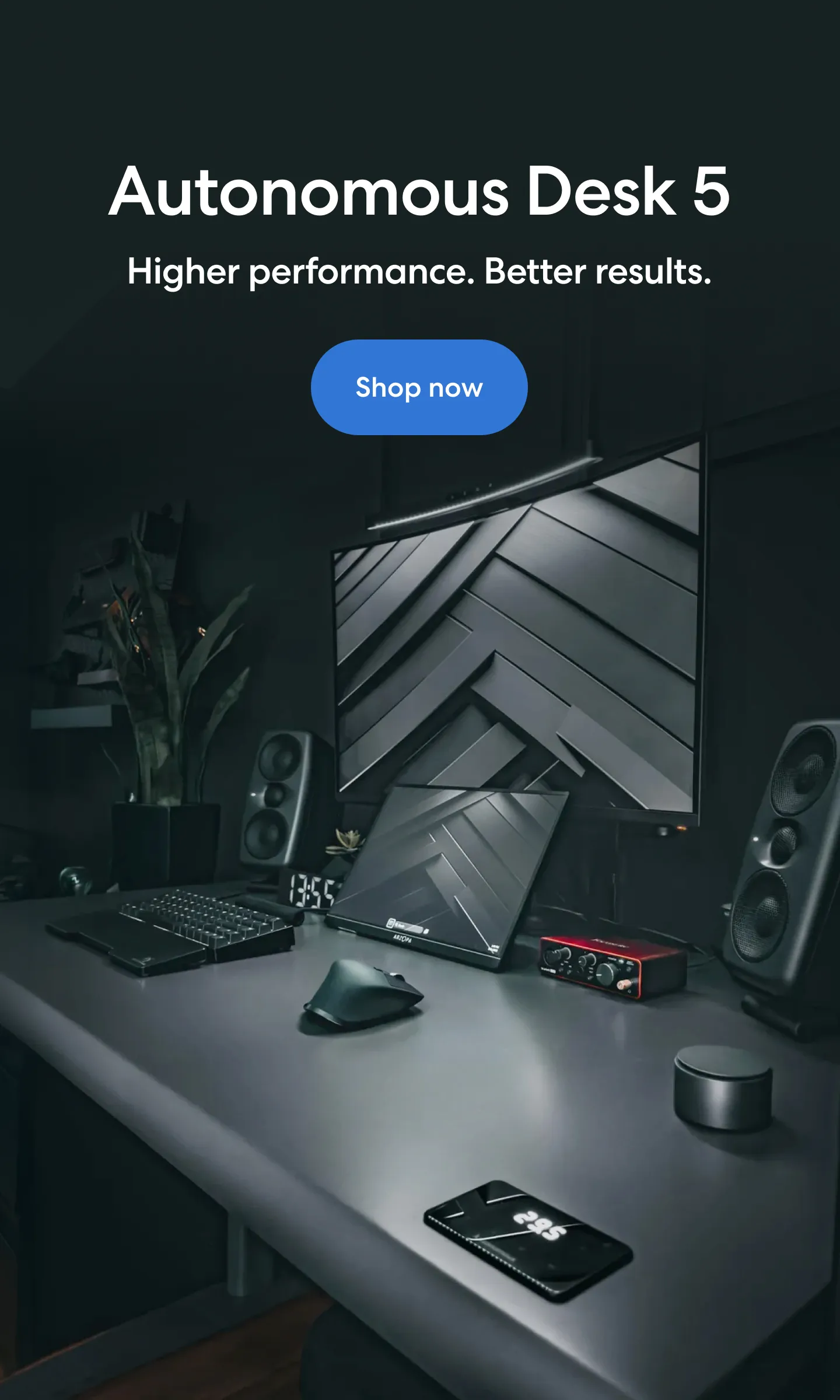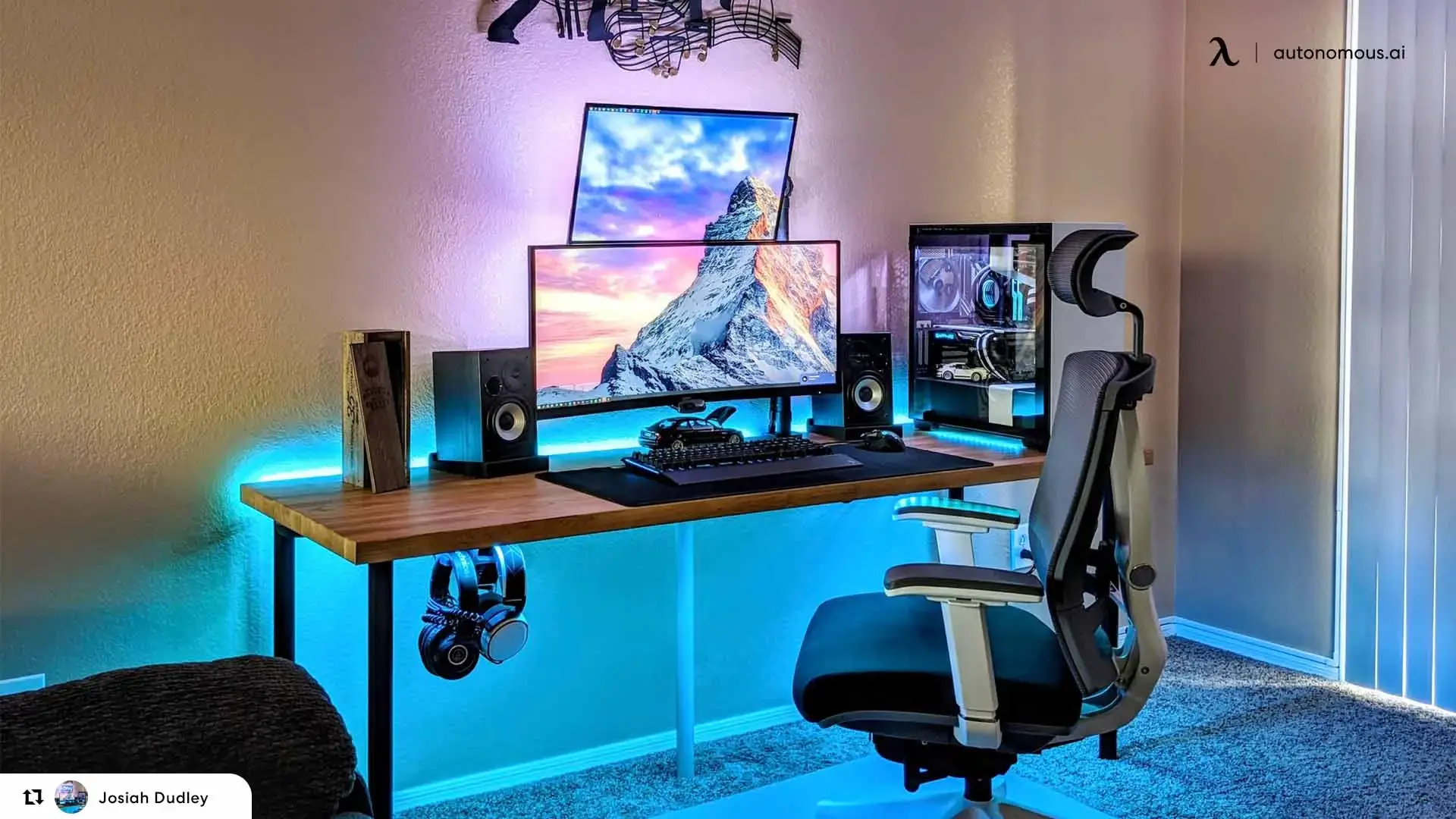
Best 144Hz Gaming Monitors for Smooth Gameplay in 2025
Table of Contents
So, you’ve probably heard all the hype about gaming monitors with 144Hz, but are they really worth it? Short answer: Yes, they are! If you’re serious about gaming, a 144Hz gaming monitor is a total game-changer. Whether you’re grinding through a high-stakes shooter or just diving into a new RPG, a 144Hz refresh rate means smoother visuals and less motion blur — basically, your eyes will thank you.
I’ve tested out a few myself, and let me tell you, there’s a noticeable difference. Whether you’re looking for something 1080p 144Hz for that sweet budget-friendly setup, a 1440p 144Hz for that crispy mid-tier balance, or going all out with a 4K 144Hz gaming monitor, you’ll be amazed by how smooth the gameplay feels. Oh, and if you want to feel even more immersed, curved 144Hz gaming monitors can add that extra “wow” factor.
When deciding on a monitor, gaming monitor size plays an important role in your experience. And if you're unsure whether to go for a 24-inch vs 27-inch monitor, that decision can also influence how you enjoy your game.
1. Best Premium: 4K 144Hz Gaming Monitors
When you're aiming for the best 4K 144Hz gaming monitor, you're looking for a combination of crisp visuals, fast refresh rates, and smooth gameplay. Here’s a curated list of top monitors across different brands that stand out.
Model | Panel Type | Size | Max Refresh Rate | HDR Support | Notable Features |
ASUS ROG Swift OLED PG27UCDM | QD-OLED | 27" | 240Hz | Dolby Vision | Excellent motion, deep blacks, OLED panel, DisplayPort 2.1 |
BenQ MOBIUZ EX321UX | Mini-LED IPS | 32" | 144Hz | HDR1000 | Bright for well-lit rooms, USB-C with 65W PD |
LG UltraGear 27GR93U-B | IPS | 27" | 144Hz | DisplayHDR 400 | G-SYNC compatible, FreeSync Premium |
KTC 27" 4K UHD 144Hz | IPS | 27" | 160Hz | HDR400 | 1ms response time, G-SYNC and FreeSync Premium |
Dell G3223Q | IPS | 32" | 144Hz | VESA DisplayHDR 600 | Console-friendly, HDMI 2.1, FreeSync & G-SYNC |
These premium 4K 144Hz gaming monitors each bring something unique to the table, whether it’s QD-OLED, Mini-LED, or excellent HDR performance. The top OLED gaming monitors deliver exceptional performance in these areas. Choose based on your specific needs, from PC gaming to console gaming or a mix of both!
2. Best 1440p 144Hz Gaming Monitors
For gamers who want a balance between performance and price, 1440p 144Hz gaming monitors offer a sweet spot. These monitors provide crisp visuals and smooth gameplay without pushing your hardware as much as 4K models.
Model | Panel Type | Size | Max Refresh Rate | HDR Support | Notable Features |
ASUS ROG Strix OLED XG27ACDNG | QD-OLED | 27" | 360Hz | HDR10+ | Exceptional gaming performance, HDMI 2.1, KVM switch |
ASUS ROG Strix OLED XG27AQDMG | OLED | 27" | 240Hz | HDR10 | Deep blacks, brighter rooms, HDMI 2.1 |
Dell Alienware AW3423DWF | QD-OLED | 34" | 165Hz | DisplayHDR 600 | Ultrawide immersive experience, G-SYNC compatible |
AOC Q27G3XMN | VA | 27" | 180Hz | DisplayHDR 400 | Budget-friendly, 336-zone local dimming, FreeSync/G-SYNC |
KTC H27T22C-3 | IPS | 27" | 210Hz | No HDR | High refresh rate, affordable, FreeSync/G-SYNC compatible |
Each of these monitors offers a unique set of features catering to different gaming preferences and budgets. Whether you're a competitive gamer, a content creator, or someone seeking an immersive gaming experience, there's a monitor here to suit your needs. Gaming monitors vs regular monitors differ in key areas like refresh rate, response time, and resolution, making them better suited for specific tasks.
3. Best 1080p 144Hz Gaming Monitors
If you're looking for a smooth and responsive gaming experience without pushing your system too hard, a 1080p 144Hz gaming monitor is the sweet spot. These monitors deliver sharp visuals, ultra-smooth performance, and are ideal for fast-paced gaming.
Model | Panel Type | Size | Max Refresh Rate | HDR Support | Notable Features |
ArcticPro 24-inch Monitor | IPS | 24" | 144Hz | No HDR | Wide color gamut (110% sRGB), 1ms response, FreeSync/G-SYNC |
MSI PRO MP273L E14 | IPS | 27" | 144Hz | HDR Ready | TÜV certified, 1ms response, Adaptive Sync |
KOORUI 24-inch Gaming Monitor | IPS | 24" | 144Hz | No HDR | 99% sRGB, Adaptive Sync, flicker-free technology |
These 1080p 144Hz monitors are perfect for gamers who need smooth, responsive visuals without breaking the bank. Whether you’re into competitive gaming or just want to enjoy your favorite titles, these monitors provide a great experience.
4. Best Curved 144Hz Gaming Monitors
Curved 144Hz gaming monitors offer an immersive experience that flat screens can't match. The curvature helps fill your peripheral vision and reduces eye strain during long gaming sessions. Whether you're playing fast-paced shooters or open-world games, the curved screen helps create a more natural and comfortable viewing experience.
Model | Panel Type | Size | Max Refresh Rate | HDR Support | Notable Features |
Gawfolk 27-inch Curved Monitor | VA | 27" | 180Hz | No HDR | FreeSync & G-SYNC compatible, 1ms response, eye-care tech |
KTC 27-inch 1440p Curved Monitor | VA | 27" | 170Hz | No HDR | 120% sRGB, FreeSync/G-SYNC, 1ms response time |
INNOCN 40C1R 40" Ultrawide | IPS | 40" | 144Hz | HDR400 | 95% DCI-P3, ultrawide ratio, USB-C & DP ports |
CRUA 27" Curved Gaming Monitor | VA | 27" | 180Hz | No HDR | 120% sRGB, FreeSync/G-SYNC, tilt-adjustable |
MSI Optix MAG342CQR | VA | 34" | 144Hz | No HDR | 1500R curve, UWQHD resolution, Adaptive Sync |
These curved 144Hz gaming monitors deliver an immersive experience with smooth visuals and great clarity, making them perfect for all types of gamers. The debate of curved vs flat monitor for gaming often comes down to personal preference, but both options offer distinct advantages. For an even wider field of view, an ultrawide gaming monitor might be the way to go, providing an expansive, cinematic gaming experience.
5. Best Overall: The All-Rounder 144Hz Gaming Monitor
The Dell Alienware AW3423DWF stands out as a premier choice for gamers seeking an immersive and high-performance monitor. This 34-inch ultrawide QD-OLED display offers a 3440x1440 resolution with a 165Hz refresh rate, delivering exceptional clarity and smoothness.
- Display Quality
The AW3423DWF's QD-OLED panel provides true blacks and vibrant colors, enhancing both gaming and multimedia experiences. Its 0.1ms gray-to-gray response time ensures fluid motion with minimal blur, making it ideal for fast-paced gaming. The monitor also boasts a high contrast ratio and wide color gamut, contributing to stunning visuals.
- Performance Features
Equipped with AMD FreeSync Premium Pro and VESA AdaptiveSync Display certification, the AW3423DWF supports various variable refresh rate (VRR) formats, reducing screen tearing and stuttering. Its low input lag further enhances responsiveness, providing a competitive edge in gaming.
- Design and Ergonomics
The monitor features a sleek, curved design that wraps around the user's field of view, creating an immersive experience. Its fully adjustable stand allows for tilt, swivel, and height adjustments, ensuring comfort during extended use. Additionally, the monitor's aesthetic design adds a futuristic touch to any setup.
- Connectivity and Usability
Connectivity options include two DisplayPort 1.4 ports and one HDMI 2.0 port, accommodating a range of devices. The inclusion of USB ports and audio-out options adds to its versatility. While the monitor's design may not appeal to all users, its performance and features make it a top contender in the gaming monitor market.
The Dell Alienware AW3423DWF is a top-tier gaming monitor that combines cutting-edge display technology with high performance and ergonomic design. Its QD-OLED panel delivers exceptional image quality, while its gaming features ensure a responsive and immersive experience. For gamers seeking a premium monitor, the AW3423DWF is a compelling choice.
6. Key Features to Look for in a 144Hz Gaming Monitor
6.1. Panel Type (IPS, VA, TN)
The panel type significantly affects the color accuracy, contrast, and viewing angles of your monitor. Here’s a quick rundown of the three most common types:
- IPS (In-Plane Switching): Known for vivid colors and wide viewing angles, IPS panels are great for gamers who want stunning visuals and accurate colors. However, they can be more expensive and may have slightly slower response times compared to other panel types.
- VA (Vertical Alignment): VA panels are great for high contrast ratios and deep blacks, making them ideal for dark-room gaming. They usually offer better response times than IPS but may not have the same color accuracy or viewing angles.
- TN (Twisted Nematic): While TN panels offer the fastest response times, they have poor color reproduction and limited viewing angles. These are typically best for competitive gamers who prioritize speed over visual quality.
6.2. Resolution
Monitor resolution determines how sharp and detailed the image will appear on your monitor. For 144Hz gaming monitors, the most common resolutions are:
- 1080p (Full HD): The standard resolution for gaming monitors. Great for gamers who want to hit high frame rates without putting too much strain on their GPU.
- 1440p (Quad HD): A great middle ground between 1080p and 4K. 1440p gaming monitors offer sharper images and more screen real estate, ideal for gamers who want better visuals without demanding the power of a 4K monitor.
- 4K (Ultra HD): For those who want extremely detailed visuals and have a high-end GPU to push those pixels. While a 4K gaming monitor requires more GPU power, it provides the best picture quality for immersive gaming experiences.
6.3. Response Time
Response time is the amount of time it takes for a pixel to change from one color to another, typically measured in milliseconds (ms). A lower response time is crucial for fast-paced games to reduce motion blur and ensure smooth visuals. Look for monitors with a 1ms or 2ms response time for the best performance, especially for competitive gaming.
6.4. Refresh Rate
The refresh rate (measured in Hz) indicates how many times per second the screen updates. A 144Hz refresh rate is ideal for gaming because it ensures smooth visuals and reduces motion blur, particularly in fast-moving scenes.
For competitive gamers, 240Hz and 360Hz monitors may be even better, though 144Hz is the sweet spot for most users. A 240Hz gaming monitor can offer even smoother gameplay for those who want the highest level of performance. For those looking for something even faster, a 540Hz gaming monitor could be the next step up.
6.5. Adaptive Sync Technology
Adaptive Sync is a technology that helps eliminate screen tearing and stuttering by synchronizing the monitor's refresh rate with your graphics card's frame rate. There are two main types:
- NVIDIA G-SYNC: Best for NVIDIA graphics cards, it provides smoother gameplay with minimal screen tearing.
- AMD FreeSync: Works with AMD graphics cards and is usually more affordable than G-SYNC.
Many modern monitors support both technologies, allowing you to choose based on your graphics card.
6.6. Connectivity
Make sure your monitor has the appropriate ports to connect with your devices. Most 144Hz monitors come with:
- HDMI: Common for console gaming and basic connectivity.
- DisplayPort (DP): Ideal for PC gaming with high refresh rates, especially if you're using a 1440p or 4K monitor.
- USB-C: Some monitors also come with USB-C connectivity for easy connection to laptops or mobile devices.
Additionally, check if your monitor has features like USB hubs, audio-out ports, and VESA mount compatibility for flexible setups. If you're looking for the right cord to connect a laptop to a monitor, or guidance on connecting 4 monitors to a laptop, it’s important to know your options. You can also find information on how to connect 3 monitors to a laptop.
If your monitors aren’t connecting, this guide explains how to resolve the issue with monitors not connecting to a laptop.
6.7. Design and Ergonomics
Comfort is key, especially for long gaming sessions. Look for a monitor with an adjustable stand that allows you to tilt, swivel, and adjust height for the best viewing angles. A curved screen (1800R to 1500R) can also help provide an immersive experience by wrapping the screen around your peripheral vision, reducing the need to turn your head during gameplay.
If you’re planning to set up multiple monitors, consider creating a triple gaming monitor setup to take your immersion to the next level — it provides a more expansive view that’s great for both gaming and productivity. For even more screen real estate, a four-monitor gaming setup offers maximum visual space, giving you plenty of room for multitasking or gaming across multiple windows.
If you prefer a simpler, more focused experience, a dual monitor gaming setup could be perfect for you, especially for those looking for a more compact but still immersive arrangement.
Finally, don’t forget the importance of monitor position for gaming to avoid strain during long hours of play. Proper monitor positioning can prevent discomfort and improve your overall gaming performance.
7. FAQs
What is a 144Hz gaming monitor and why is it important?
A 144Hz gaming monitor offers a refresh rate of 144 times per second, ensuring smoother gameplay by reducing screen tearing and motion blur. It’s especially beneficial for fast-paced gaming, providing a competitive edge in titles like first-person shooters or racing games.
Is a 144Hz gaming monitor worth it for casual gaming?
Yes, even for casual gaming, a 144Hz monitor enhances the experience by offering smoother visuals and reducing motion blur. While competitive gamers benefit the most, casual gamers will still notice a difference in overall picture quality and responsiveness.
Can I use a 144Hz gaming monitor for video editing or creative work?
Yes, 144Hz gaming monitors can be used for video editing or graphic design, but you should consider other factors like color accuracy and resolution. An IPS panel with good color reproduction is ideal for creative work, and 144Hz improves smoothness for video playback.
What is the difference between a 144Hz and 60Hz monitor for gaming?
A 144Hz gaming monitor updates the screen 144 times per second, while a 60Hz monitor only does it 60 times. The 144Hz refresh rate provides a much smoother gaming experience, reducing motion blur and enhancing response time compared to 60Hz monitors.
Do I need a powerful GPU for a 144Hz gaming monitor?
Yes, to fully take advantage of a 144Hz gaming monitor, you’ll need a powerful GPU that can consistently produce high frame rates. For high-resolution monitors like 1440p or 4K, you’ll need a more powerful GPU to run games at 144Hz without stuttering.
Can I run 144Hz on a 1080p monitor?
Yes, a 1080p 144Hz gaming monitor is common and works perfectly with 1080p resolution. It offers high frame rates, which results in smoother gameplay without requiring an extremely powerful GPU, making it a popular choice for many gamers.
How do I enable 144Hz on my gaming monitor?
To enable 144Hz on your monitor, you’ll need to make sure the display settings on your PC or console are set to 144Hz. Additionally, ensure your cable (DisplayPort or HDMI) supports 144Hz, and your GPU can handle the higher refresh rate.
Will a 144Hz gaming monitor improve FPS performance?
While a 144Hz gaming monitor doesn’t increase your frame rate (FPS), it provides a smoother visual experience when your FPS is high. If your GPU produces a high frame rate, a 144Hz monitor will display those frames more smoothly than a 60Hz monitor.
Can I use a 144Hz gaming monitor with a PlayStation or Xbox?
Yes, you can use a 144Hz gaming monitor with PlayStation or Xbox, but keep in mind that consoles are typically limited to 60Hz or 120Hz. A 144Hz monitor can still be beneficial for future-proofing, especially with next-gen consoles that support higher refresh rates.
How important is response time on a 144Hz gaming monitor?
Response time is crucial on a 144Hz gaming monitor because it determines how quickly the monitor responds to changes in the frame rate. A 1ms response time is ideal for competitive gaming, as it minimizes motion blur and ghosting, providing a more fluid experience.
Can a 144Hz gaming monitor be used for work or productivity?
Absolutely! A 144Hz gaming monitor can be great for productivity tasks, especially if you enjoy multitasking or need smooth scrolling. While they’re optimized for gaming, the high refresh rate can improve overall comfort when using the monitor for work or watching videos.
Does a 144Hz gaming monitor make a difference in FPS games?
Yes, a 144Hz gaming monitor makes a significant difference in FPS games by providing smoother visuals, reducing input lag, and enhancing responsiveness. It allows you to react faster and more accurately, offering a competitive advantage in fast-paced gameplay.
Conclusion
In the world of gaming, where every frame counts, choosing the best 144Hz gaming monitor can elevate your experience significantly. Whether you’re chasing high frames for competitive play or just want smoother visuals for an immersive single-player experience, a 144Hz monitor provides the perfect balance between performance, visual quality, and price.
From 4K 144Hz monitors for the ultimate visual experience to budget-friendly 1080p models that deliver smooth, responsive gameplay, there’s a perfect monitor for everyone. Consider key features like panel type, response time, resolution, and refresh rate when making your choice, and always look for features like adaptive sync for a smoother experience.
Ultimately, a 144Hz gaming monitor is more than just an upgrade to your gaming setup — it’s a game-changer that enhances reaction time, visual clarity, and overall enjoyment. Choose wisely, and get ready for a whole new level of gaming.
If you're also looking for the best gaming monitor brands, keep an eye out for Black Friday gaming monitor deals or Black Friday curved monitor deals to get the best value for your upgrade.
Spread the word
.svg)



